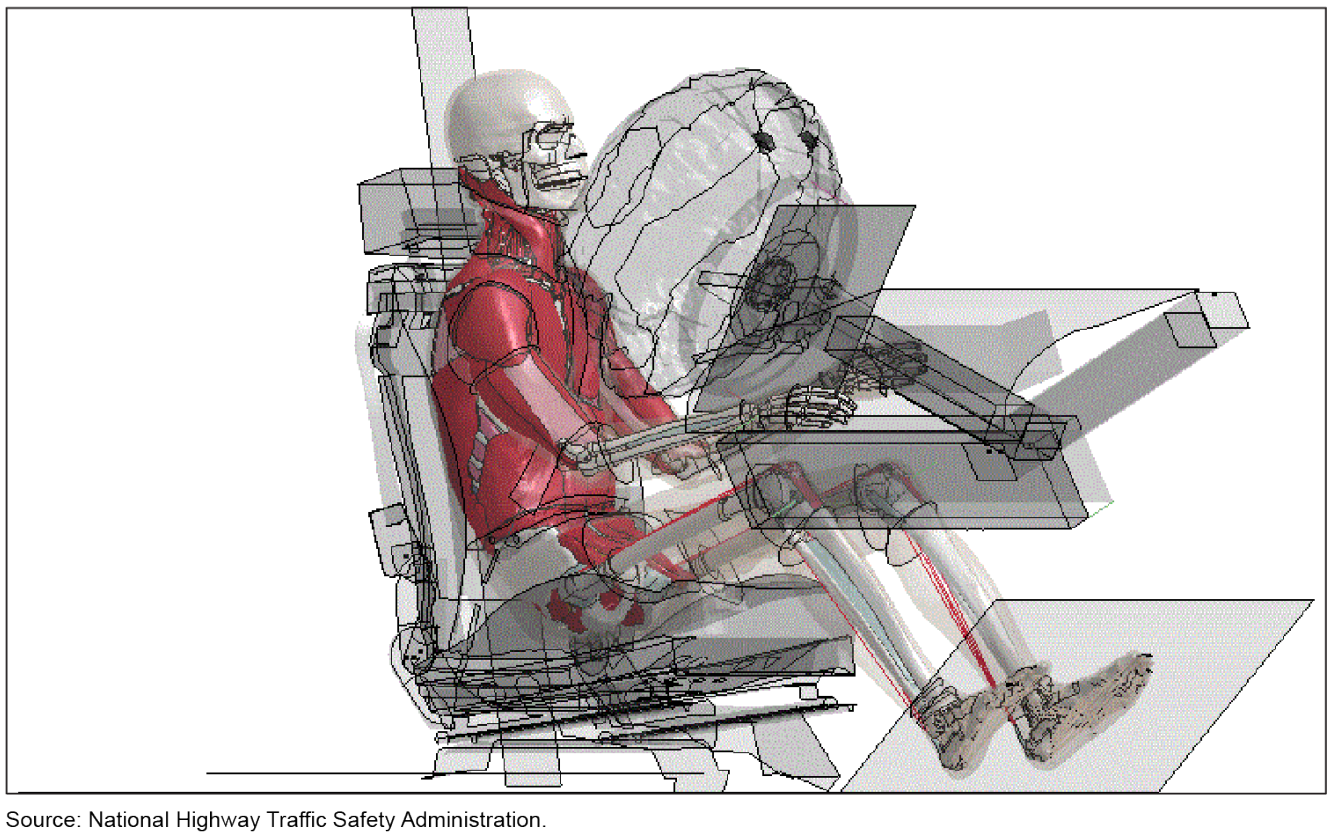

Ten years ago we wrote about rendered crash testing and posted a video from one of our large scale, high resolution visualization demonstrations of the software that allowed for crash testing analysis prior to crashing actual vehicles.
In March 2023, the United States Government Accountability Office (GAO) advised that data obtained from this kind of virtual crash test visualization, specifically the information obtained from crash test dummies, should drive better safety standards. Information for their report came the Global Human Body Models Consortium which was created to "develop and maintain models capable of simulating the complex movement of the human body during a vehicle crash, and of predicting the onset and severity of potential injury."
According the GAO report, "Crash test simulations are virtual recreations of crash tests that use computer models of human bodies and of vehicles. Simulations are capable of calculating the movement of the human body during a vehicle crash, the onset and severity of potential injury, and the vehicle’s ability to protect its occupants. To make these calculations, simulations take into account selected assumptions and the geometry and forces associated with crashes. Simulations can use a range of human body models to show how demographic differences—such as height, weight, and body type—affect crash outcomes." They clarify that simulation be used as a complement to, not a replacement for, physical crash tests.
We are continually amazed to see what has been discovered, and solved, through the use of visualization. 2014 was the year we listened to an automotive engineer tell us that he was approached by his manager and asked to design failure into the wheel he was working on. He had spent many years making the wheel lighter and stronger to meet other objectives (fuel economy, performance, etc.) but was now being told it needed to literally break during a front end collision at speeds of over 50 MPH. Why?
The answer came from the designers/engineers that were working with virtual crash testing visualization. Initially, they were stumped that everyone but the driver was surviving in a particular front end crash test they were running. Through the use of the virtual rendering software, they were able to isolate (basically checking or unchecking parts lists in the software), piece by piece, what was happening in the various systems during the crash. They could look at just the frame, or the suspension, or whatever combination they wanted. They ended up discovering, that during this particular crash, the front driver side wheel (the one mentioned above) was pushing into the cockpit and forcing the steering column into the chest of the driver killing them when speeds exceeded 50mph. They now needed to have the wheel break down at impacts above 50mph so it would not push the steering column into the driving compartment and cause injury to the driver.
Visualization technology continues to improve. This will help drive improvements in safety that are developed, in part, by data provided by utilizing virtual crash simulation which should help reduce the risk of death and injury in vehicle crashes of all types.
Immersion Graphics, Inc. (IGI) provides audio visual design, engineering, consulting, product sales, control system programming, custom fabrication, installation, preventative maintenance, and extended support services out of its headquarters location in Detroit and west coast operation in Los Angeles. Additional offices are located in Indianapolis, and Grand Rapids.
Founded in 1998, IGI has installed numerous large-scale, ultra-high resolution systems throughout the U.S. in the automotive, higher education, medical, financial, and energy transmission markets, and for the United States military and other government agencies. Applications include industrial design, engineering and data visualization, mission-critical command & control room environments, presentation systems, video conferencing, digital signage, and a variety of commercial AV solutions for emerging markets where the simultaneous visualization of 3D models and complex data by a group is essential to effective decision making. To get an in depth look at what we do, see our website at www.werigi.com, we are IGI.
IGI is minority owned, veteran owned, and a small business and SBA 8(a) program graduate.